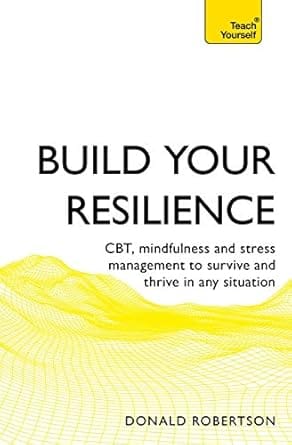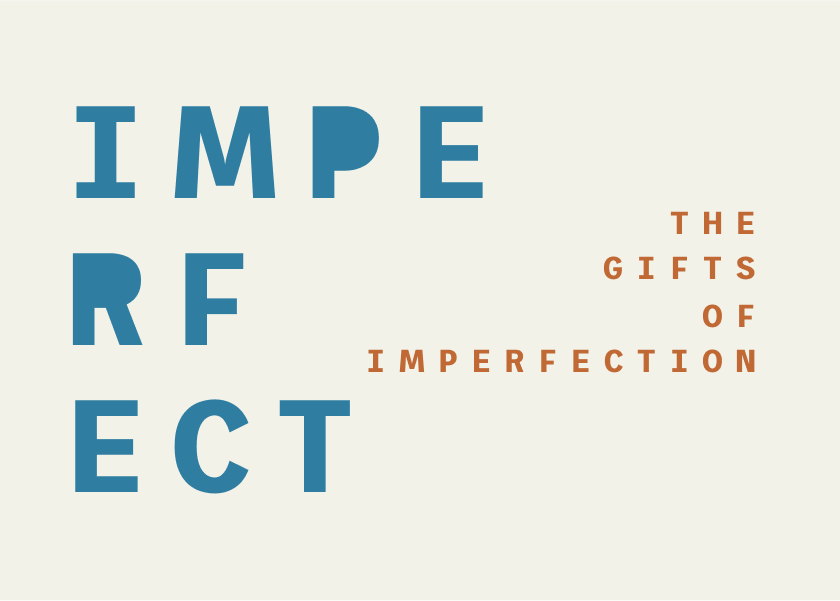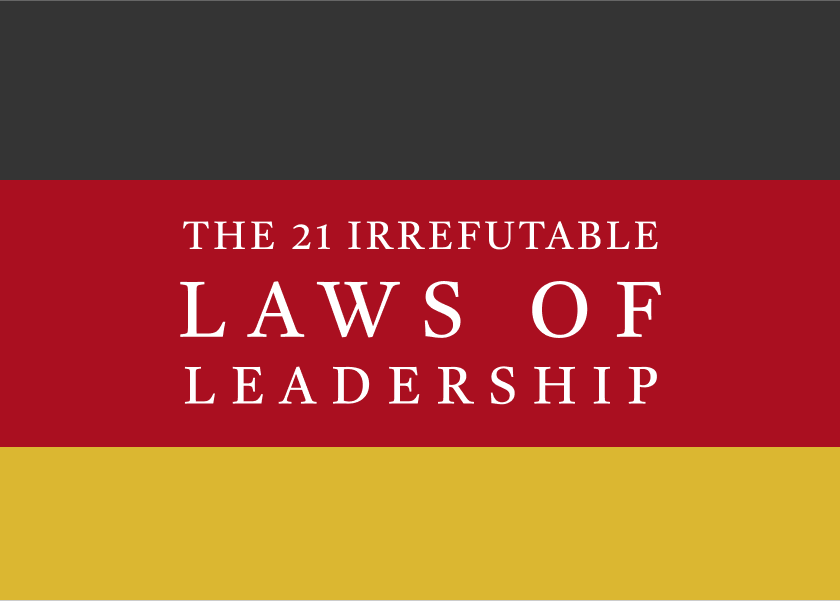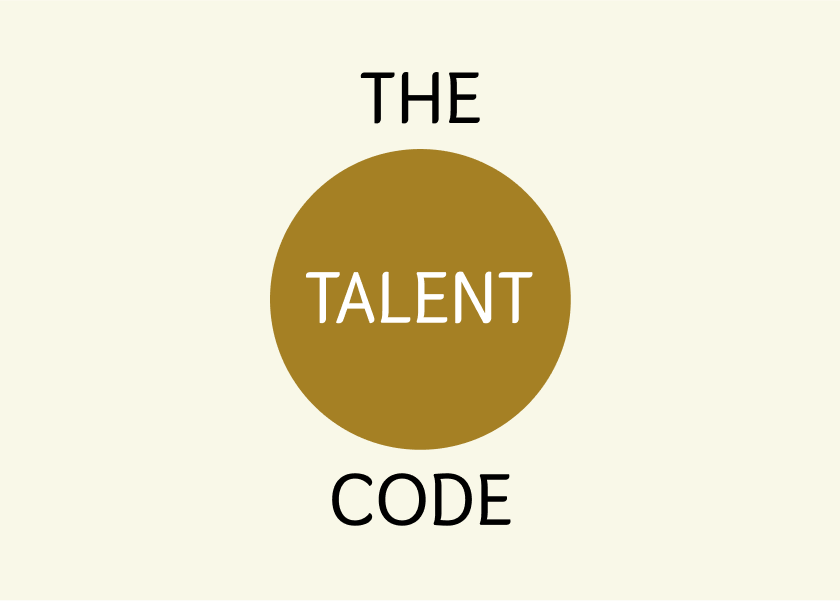Build Your Resilience by Donald Robertson - Summary
This book teaches you how to be resilient by managing stress using Cognitive Behavioural Therapy and mindfulness. It also helps you to discover values, set goals, and act with intention.
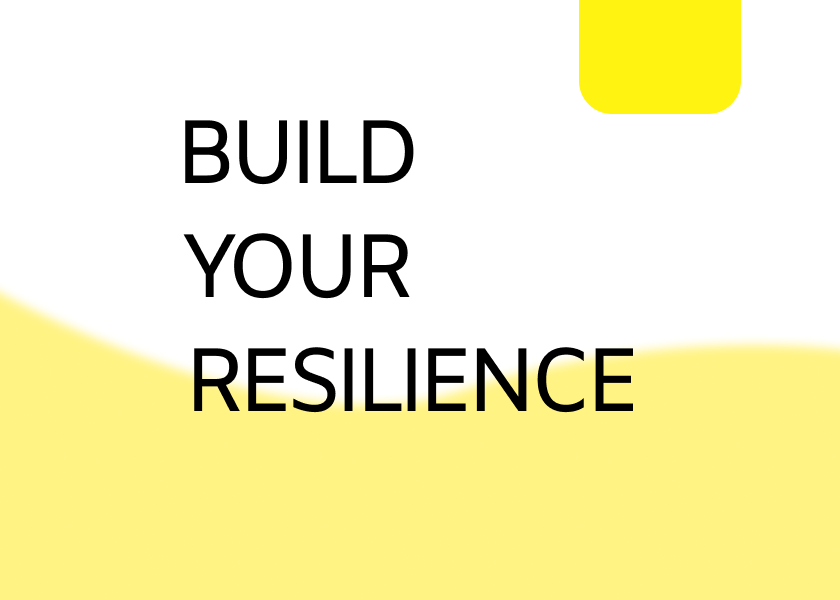
The following is a summary of the book Build Your Resilience by Donald Robertson.
Listen to ShelfHelp's podcast about the book Build Your Resilience by Donald Robertson.
Is Stress Holding You Back? Discover the Path to Resilience
Are you feeling overwhelmed by the constant pressures of life? Do you find yourself struggling to bounce back from setbacks? This article explores the key concepts of Build Your Resilience: CBT, mindfulness and stress management to survive and thrive in any situation by Donald J. Robertson. This book offers a practical guide to building mental toughness and enhancing your overall wellbeing. By using a combination of cognitive-behavioural therapy (CBT), mindfulness, and stress management techniques, Robertson provides a comprehensive approach to surviving and thriving, no matter what life throws your way. Reading this article will give you a head start in your resilience journey and offer actionable tips to get you started right away.
Table of Contents
- About the Author
- Who Should Read This Book?
- Key Insights and Themes
- Detailed Summary
- Review
- Actionable Takeaways
- FAQs
- Conclusion
About the Author
Donald J. Robertson is a highly respected author and expert in the field of cognitive-behavioral therapy (CBT) and philosophy. He has written numerous articles in therapy journals and magazines, along with books such as The Philosophy of Cognitive-Behavioural Therapy (2010) and The Practice of Cognitive-Behavioural Hypnotherapy (in press). He also edited The Discovery of Hypnosis (2009), the complete writings of James Braid, the founder of hypnotherapy. Robertson’s work demonstrates a deep understanding of both the theoretical and practical aspects of mental health and resilience, which makes him a credible and authoritative voice in this field.
Who Should Read This Book?
This book is ideal for anyone looking to develop greater mental resilience and improve their ability to manage stress and adversity. Whether you are someone dealing with daily hassles or facing significant life challenges, the techniques provided in the book will help you. Here are some examples of people who will find this book beneficial:
- Individuals who frequently experience stress and anxiety.
- People looking to improve their coping mechanisms and bounce back from setbacks.
- Those interested in learning evidence-based strategies from CBT and mindfulness.
- Anyone who wants to enhance their social skills and assertiveness.
- Individuals seeking to live more in line with their personal values.
Key Insights and Themes
Here are the key takeaways and main themes of the book:
- Resilience is a learnable skill that anyone can develop through practice.
- Cognitive-Behavioral Therapy (CBT) is a foundational approach to managing stress by targeting thoughts and beliefs.
- Mindfulness and acceptance-based approaches are essential for changing one’s relationship with unpleasant thoughts and feelings.
- Values clarification is vital for identifying what truly matters and setting meaningful goals.
- Commitment to valued action helps guide behavior and overcome obstacles.
- Acceptance and defusion techniques can reduce the impact of distressing thoughts and feelings.
- Progressive relaxation methods can reduce physical tension and promote mental relaxation.
- Applied relaxation is a portable coping skill for managing stress in real-life situations.
- Problem-solving training provides structured approaches to finding effective solutions.
- Assertiveness and social skills are crucial for building healthy relationships and navigating social situations.
- Stoic philosophy offers practical tools for increasing emotional resilience and wisdom.
Detailed Summary
This section provides a chapter-by-chapter summary of the key concepts in the book.
Introduction: What is Resilience?
- Resilience is defined as the ability to cope with stress and adversity, including adaptability, flexibility, and the capacity to recover from setbacks.
- The book emphasizes a preventative approach to building resilience, aiming to enhance positive qualities like psychological flexibility and problem-solving ability.
- The book will help you to expand beyond your "comfort zone" and reach out toward new values and goals.
- It also discusses how to develop a personal resilience strategy.
- The book explores 'risk factors' and life events that increase vulnerability to stress and the protective factors and coping strategies that reduce these risks.
Letting Go of Experiential Avoidance
- Experiential avoidance is the tendency to try to control or avoid unpleasant internal experiences.
- Acceptance and Commitment Therapy (ACT) focuses on identifying the role of experiential avoidance.
- Trying to control unpleasant thoughts and feelings can backfire, leading to increased distress.
- Resilient individuals experience unpleasant feelings without being overwhelmed by them, suggesting the importance of accepting rather than avoiding these feelings.
- The book makes a distinction between ‘clean discomfort’ and ‘dirty discomfort’ in order to help illustrate the role of acceptance.
Values Clarification
- Values are defined as ways of acting or fulfilling a role in life that are intrinsically rewarding.
- Values serve as a guide for actions and provide a sense of meaning and purpose.
- Values are ongoing and never finished, unlike goals.
- Clarifying your values helps to identify healthy goals and guides actions, thereby contributing to resilience.
- The book also distinguishes between values and demands, noting that demands are more coercive and inflexible.
- The "eulogy exercise" is introduced as a method to clarify values by imagining what you want people to say about you at your funeral.
Commitment to Valued Action
- This chapter emphasizes the importance of acting in line with one's values, rather than being controlled by automatic thoughts and feelings.
- It introduces the concept of SMART goals: Specific, Measurable, Achievable, Relevant, and Time-limited.
- The book explores action-planning and activity scheduling to implement values-based actions.
- It distinguishes between external and internal barriers to action and how to address them.
- Mental rehearsal of valued action is described as a practice to prepare for challenges and commit to values even in the face of discomfort.
- Maintaining resilience involves making public commitments, focusing on intrinsic value, planning goals and actions, willingly accepting unpleasant experiences, and renewing commitment to valued action.
Acceptance and Defusion
- The chapter introduces the importance of acceptance and defusion in managing difficult thoughts and feelings.
- Cognitive defusion involves changing the function of thoughts without trying to change their content.
- Mindfulness techniques can be used as a method for defusion, helping you to connect with yourself as the observer of your thoughts and feelings.
- The book contrasts "self-as-content" and "self-as-context" and discusses how not to fuse with your self-concept.
- Mindfulness meditation is presented as a central practice for centering and increasing self-awareness.
- The text introduces techniques like "The Three-Minute Breathing Space" to inject mindfulness into daily routines.
Progressive Relaxation
- Progressive relaxation (PR) is a technique for studying muscular tension and learning to control it, also known as ‘Tension Control’.
- The method is based on research done by Edmund Jacobson, who studied the relationship between deep muscle relaxation and mental relaxation.
- The book describes simplified versions of PR for self-help use, including an abbreviated progressive relaxation training (APRT) method.
- The chapter emphasizes the importance of practicing PR regularly to develop this skill.
- It teaches how to self-rate tension on a scale of 0-100%, to cultivate awareness of muscular tension.
- Methods of relaxation include seven muscle-group tension-release, four muscle-group tension release, relaxation-by-recall, and relaxation-by-counting.
- Differential relaxation positions are introduced for transitioning from relaxation to everyday activities.
Applied Relaxation
- Applied relaxation is a method of using progressive relaxation as a rapid and portable coping skill.
- It involves identifying early warning signs of stress and using a cue word associated with deep relaxation to ‘let go’.
- The approach is divided into several stages: self-assessment, preparation, education about the nature of stress, self-monitoring of early warning signs, and practicing different methods of PR.
- The text highlights that Applied Relaxation is based on Stress-Inoculation Training (SIT), which involves rehearsing coping skills in stressful situations to build resilience to stress in general.
- The book provides instructions on how to monitor early warning signs of stress and to make lists of stressors and your responses to them.
Worry Postponement
- Worry is defined as prolonged thinking about feared catastrophes and frustrated attempts at problem-solving.
- Learning to manage worry is considered a key skill for emotional resilience.
- The book discusses the concept of worry postponement as a method to manage it more effectively by setting aside specific "worry times".
- Mindfulness and acceptance are introduced as helpful ways to deal with worry.
Problem-Solving Training
- Problem-solving is described as a systematic approach to finding your way through a "maze" from a problem to a desired goal.
- It involves defining problems and goals objectively, brainstorming a variety of potential solutions, and evaluating the best option.
- The book teaches how to formulate problems and goals in a way that aids in finding solutions, and also emphasizes brainstorming using three classic principles: quantity, variety, and suspension of judgement.
- It also discusses the difference between general strategies and specific tactics and encourages the generation of both kinds of solutions.
- The text advises using a decision-making method of rating solutions based on how easy they are to put into practice and how likely they are to achieve the desired goal.
- The chapter also provides guidance on how to create a plan of action and implement the chosen solution, and the importance of not sacrificing your values.
Assertiveness and Social Skills
- This section emphasizes that assertiveness is a basic right, just like the right to express your opinions, within the context of social interactions.
- The book suggests balancing personal rights with the rights of others by not applying "double standards".
- It provides an overview of a variety of social skills, including the "broken record" technique, fogging, and active constructive responding.
- The four-step assertiveness strategy is described as a method to tackle social problems: describing the facts, empathizing, asserting your opinions, and proposing a solution.
- The book also discusses the importance of interpersonal problem-solving.
- The book stresses that preventing and overcoming social problems, strengthening social skills and enhancing social relationships will improve psychological resilience over the long term.
Stoic Philosophy and Resilience
- This chapter explores the Stoic philosophy as a system that resembles modern approaches to emotional resilience.
- It presents key principles from Stoic philosophers like Epictetus and Marcus Aurelius.
- It states that Stoics were mindful of their thoughts and tried to avoid confusing them with reality.
- The book highlights the Stoic belief that suffering is caused by placing too much value on things outside one's control, rather than on one's values.
- The book mentions classic Stoic techniques such as contemplating “the View from Above” and an ideal resilient role model, or “the Sage”.
Review
Strengths:
- The book is comprehensive, covering a wide range of resilience-building techniques, including CBT, mindfulness, relaxation, and social skills.
- It is well-researched, drawing on established psychological therapies and research.
- It offers practical, actionable advice with exercises and real-life examples, rather than simply presenting theoretical concepts.
- It emphasizes a holistic approach, integrating physical and mental strategies.
- The book includes a troubleshooting section to address common problems people may encounter when attempting to build resilience.
- The writing style is clear and accessible, making complex psychological concepts easy to understand.
Weaknesses:
- Some readers may find the amount of information overwhelming.
- The book requires active participation and practice from the reader to achieve results, which may be challenging for some.
- Some of the concepts, particularly those related to mindfulness and acceptance, may be subtle and require careful attention.
- The book notes that if you are experiencing more serious psychological issues, such as psychosis, anxiety or depression, then you should seek help from an appropriately qualified professional, and not use this book except under the supervision of a therapist.
Actionable Takeaways
Here's how you can apply the lessons from this book in real life:
- Start with Values Clarification: Identify your core values by reflecting on what truly matters to you. Use the "eulogy exercise" to define what you want your life to stand for.
- Set SMART Goals: Create specific, measurable, achievable, relevant, and time-limited goals that align with your values.
- Practice Mindfulness: Incorporate mindfulness into your daily routine by labeling experiences or by doing a short meditation. Use the Three-Minute Breathing Space technique several times a day.
- Learn Progressive Relaxation: Practice the tension-release techniques daily to reduce muscle tension and promote relaxation. Start with the seven muscle-group procedure and gradually move to briefer methods.
- Implement Applied Relaxation: Monitor early warning signs of stress and use a cue word to relax quickly during challenging situations.
- Use Worry Postponement: Set aside specific times to address your worries, rather than letting them consume your thoughts throughout the day.
- Improve Problem-Solving Skills: Define problems objectively, brainstorm solutions, evaluate your options, and create an action plan.
- Develop Assertiveness: Use the four-step assertiveness strategy to express your needs clearly and respectfully. Practice active listening and use techniques like fogging and the "broken record".
- Embrace Stoic Principles: Reflect on what you can control and focus on acting in line with your values. Contemplate the qualities of a resilient role model.
- Create a Resilience-Building Journal: Record your progress, challenges, and insights to track your development and stay motivated.
FAQs
- What is "Build Your Resilience" about?
- This book provides a comprehensive guide to building mental resilience using CBT, mindfulness, and stress management techniques. It aims to help readers cope with stress, bounce back from adversity, and thrive in any situation.
- Is "Build Your Resilience" worth reading?
- Yes, especially if you are seeking practical and evidence-based strategies for managing stress and improving your overall wellbeing. The book offers a holistic approach and is beneficial for anyone looking to develop greater mental toughness.
- What is the main idea of the book?
- The main idea is that resilience is not an innate trait but a learnable skill. By applying techniques from CBT, mindfulness, and Stoic philosophy, individuals can develop the mental toughness needed to navigate life’s challenges.
- How does this book use CBT to build resilience?
- This book uses CBT to target unhelpful thoughts and behaviors by helping individuals to identify and challenge negative thinking patterns and to replace them with more adaptive ones.
- How does mindfulness improve resilience?
- Mindfulness enhances self-awareness, allowing you to respond to stress in a centered way rather than being overwhelmed by thoughts or emotions.
- What is experiential avoidance?
- Experiential avoidance is the tendency to try to control, suppress, or avoid unpleasant internal experiences such as thoughts, feelings, and urges. It is often counterproductive and can lead to greater distress.
- What are SMART goals?
- SMART goals are Specific, Measurable, Achievable, Relevant, and Time-limited goals. They are used to ensure goals are well-defined and likely to be successfully completed.
- What is the 'broken record' technique?
- The "broken record" technique involves calmly and patiently repeating your point without engaging in arguments or side issues.
Conclusion
Build Your Resilience by Donald J. Robertson is an invaluable resource for anyone seeking to enhance their mental toughness and navigate life's challenges with greater ease. By integrating evidence-based techniques from CBT, mindfulness, and Stoic philosophy, this book provides a comprehensive approach to building resilience that is both practical and effective. The key takeaway is that resilience is a learnable skill, not an innate trait, and that you can start today to improve your ability to thrive in the face of adversity. Don't wait any longer to take control of your life; start applying these strategies today.
As an Amazon Associate, ShelfHelp may earn money from qualifying purchases. Needless to say, ShelfHelp only includes affiliate links to books we recommend and think are worth your time reading.
